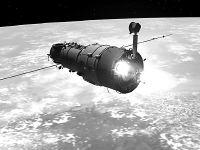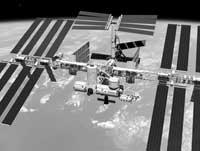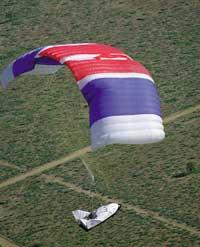Availability of space station accommodation
2000/07/11 Roa Zubia, Guillermo - Elhuyar Zientzia
The first idea was to build a station to live in space. In 1984 Ronald Reagan, president of the United States, announced it. Since then things have changed a lot, but international technical teams are working on a very solid program. Sixteen countries participate in this ambitious project. Gradually the International Space Station (ISS) is building modularly in space.
Giant project by parts
The station will have six laboratories. And it will be the space that has so far had more space for research. The interior volume will be the size of a 747 aircraft cabin. Construction of Osoa will require more than forty flights. Astronauts, space walks and robots will be used to join all the pieces (about a hundred components).
They have already made four flights related to the space station. The first was launched in November 1998 through the Russian rocket Proton. It put the Zaria control module into orbit. In December of the same year Endeavour launched the STS-88 mission. In this mission the first part was associated with the module in orbit.
In June of the following year Discovery launcher was used on mission STS-96. Two other modules joined in this mission. These modules had working tools and cranes. The fourth flight took place in May of this year. The goal was to maintain the STS-101 mission. In addition, crews of seven people were preparing the reception of the Zvezda module.
The module that will be launched tomorrow will be the accommodation of the first population. The launch will take place from the Baiconur cosmodrome of the Republic of Kazakhstan at 4:56 a.m. (Greenwich time). The launch will take place with a Proton rocket. It will take two weeks to dock at the space station. The flight will be controlled by two technical teams, American and Russian. The link is scheduled for July 25. Both Zvezda and the Zaria module of the ISS have an automatic assembly system.
The communication system between Zaria, Unity and Zvezda modules will be configured within 72 hours after link testing. The new module will be in charge of orientation control. The system starts and the joint work starts. If there are no surprises, the next mission of the space station will depart on September 8. However, the first crew can already start working on it, as the promised headquarters will be shortly assembled. Three astronauts are preparing to travel to the station on a new mission that will depart in October.

Gai honi buruzko eduki gehiago
Elhuyarrek garatutako teknologia





